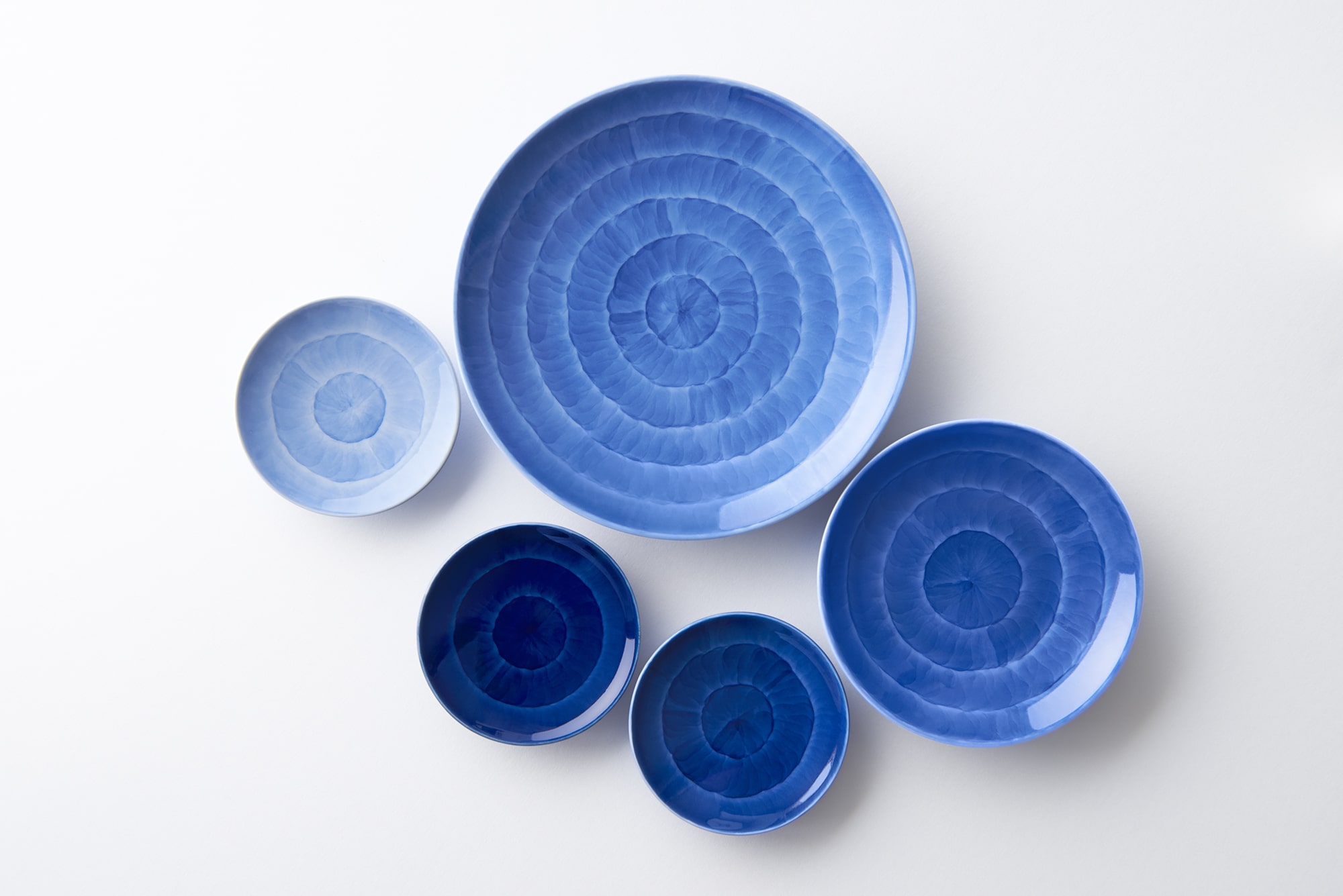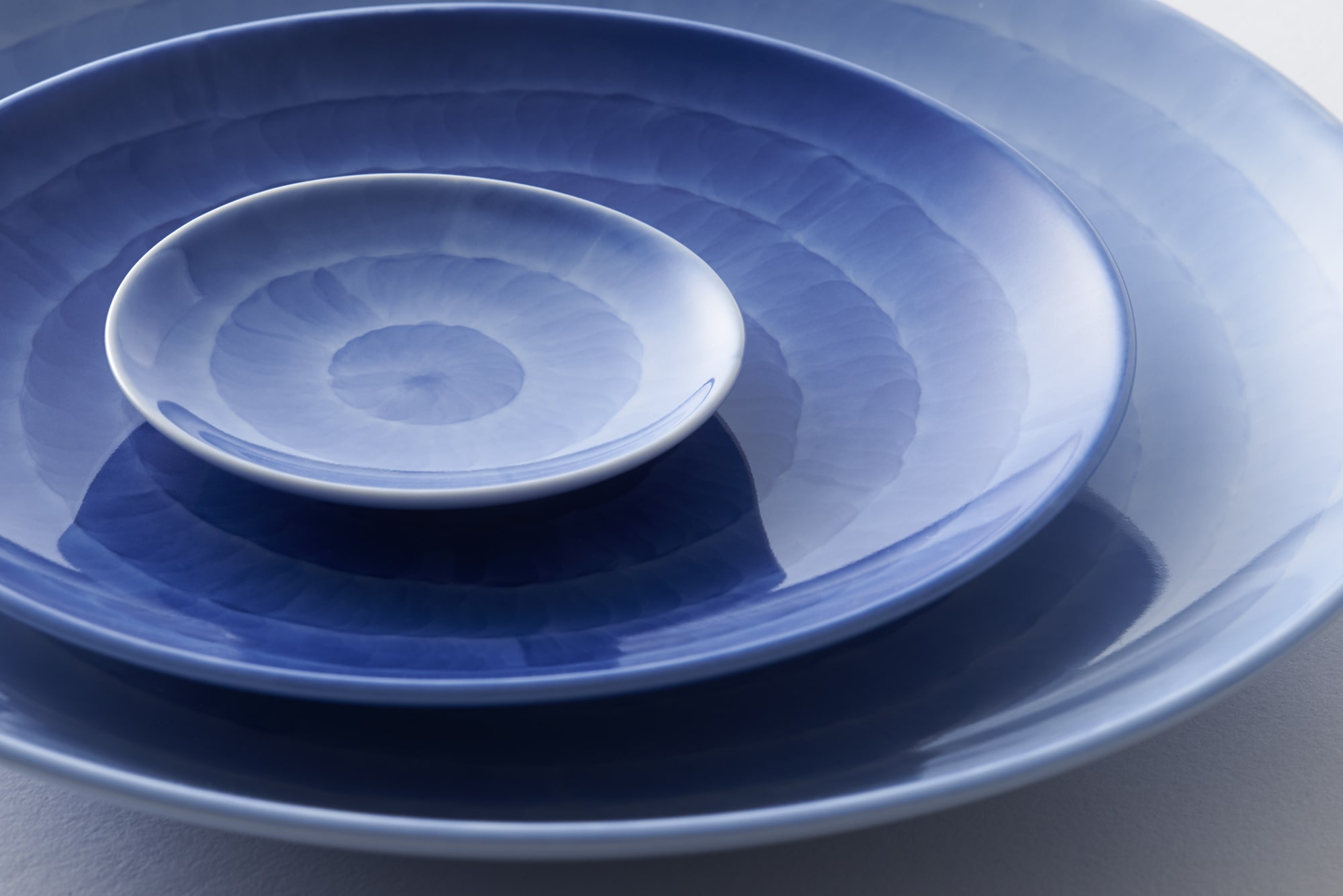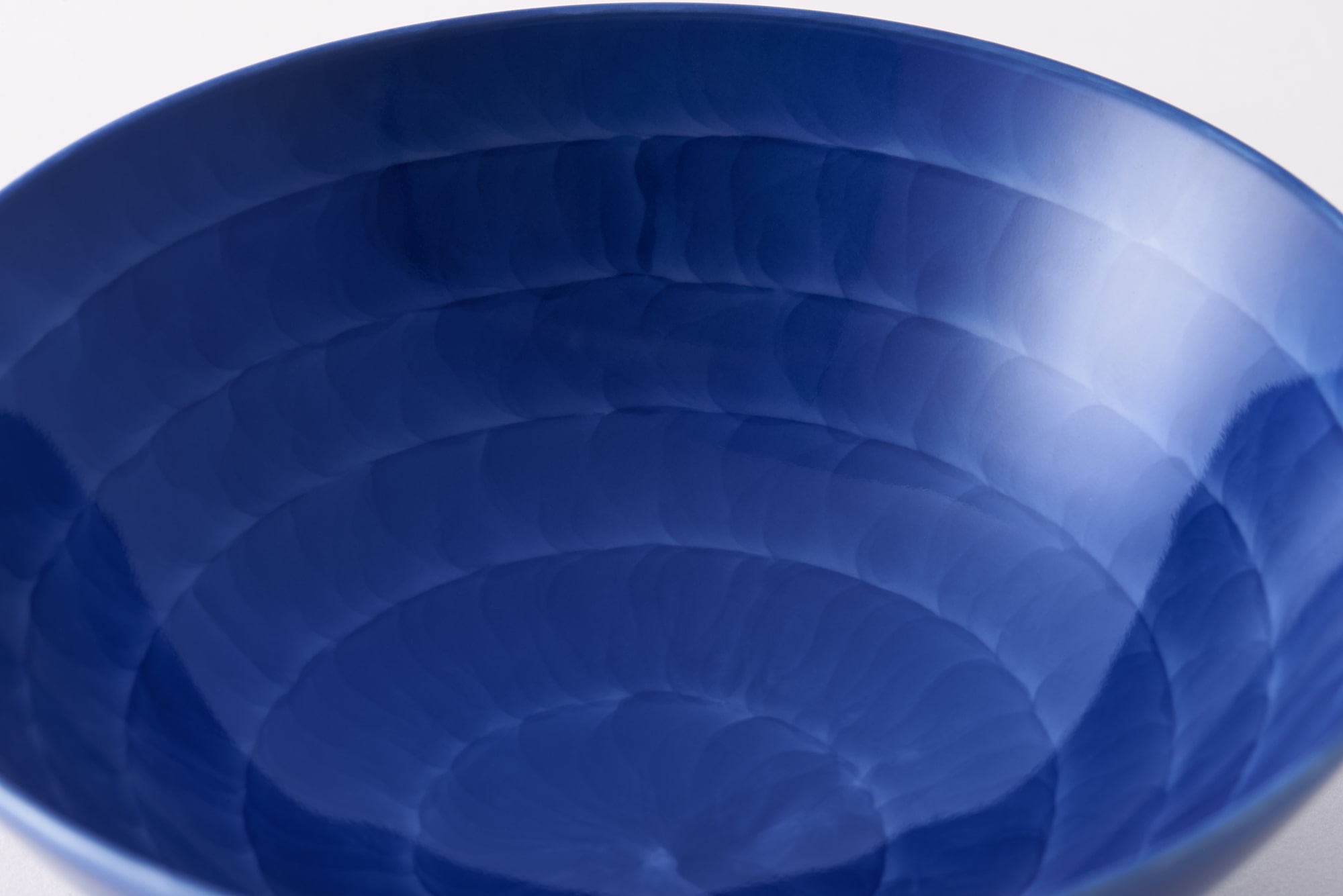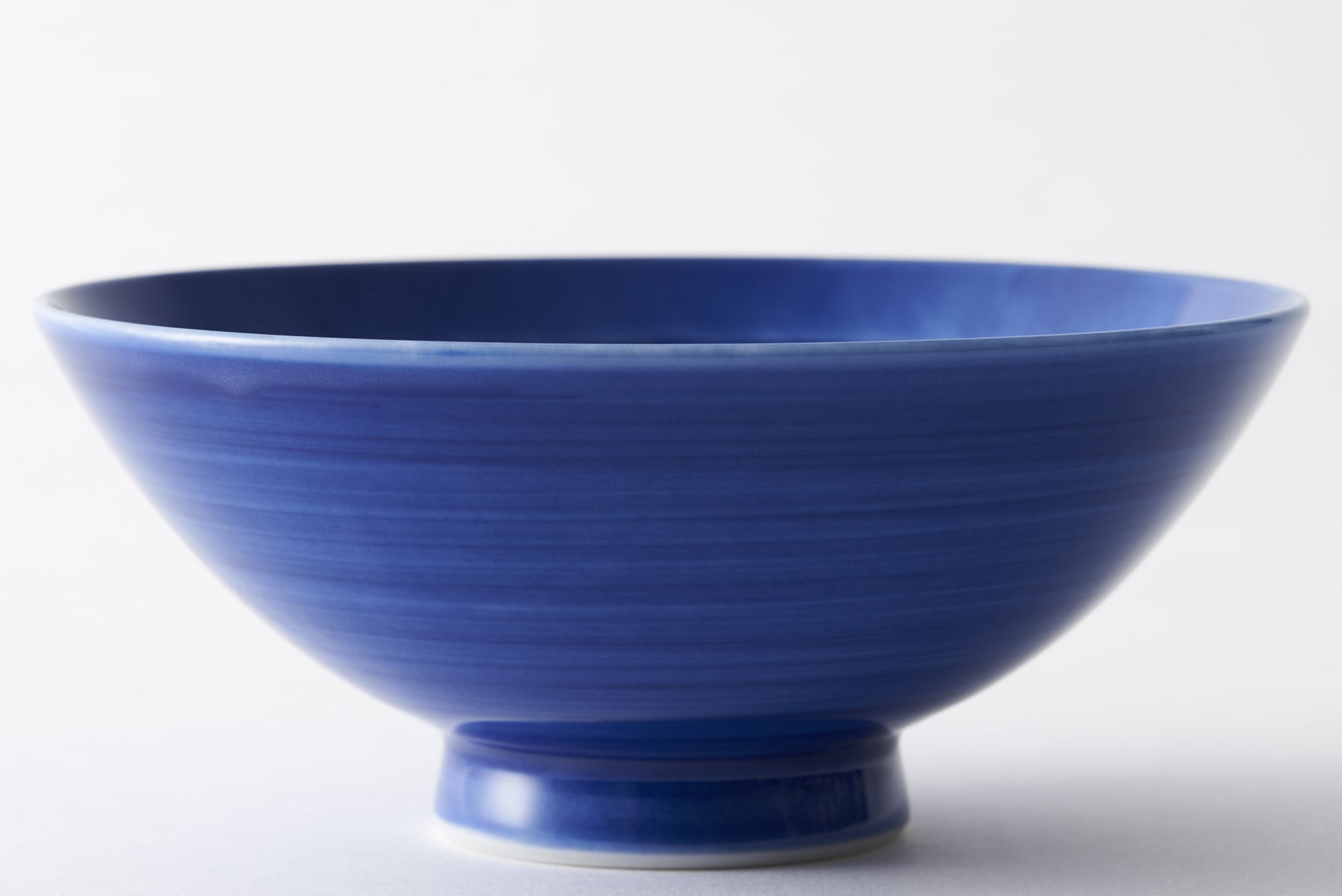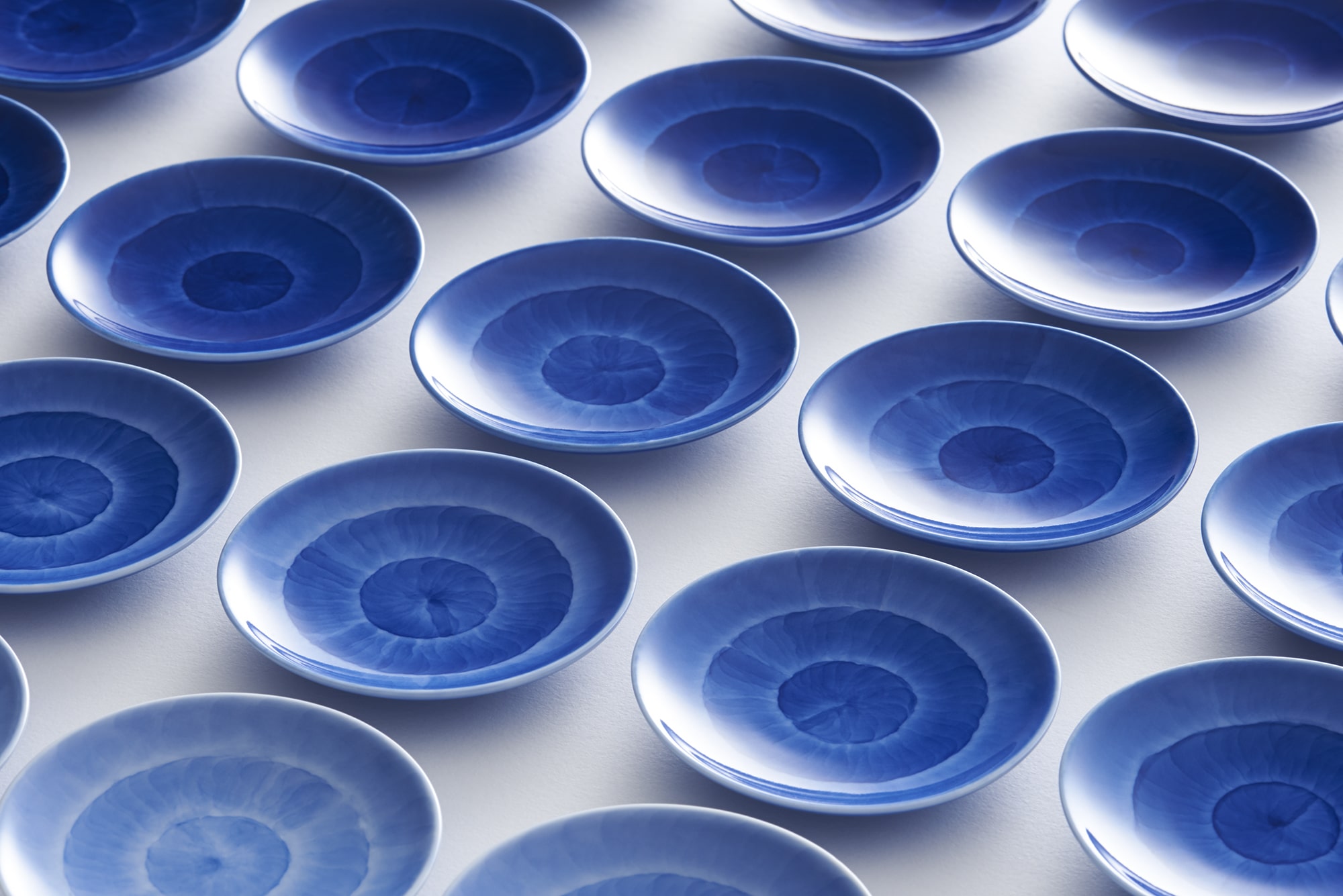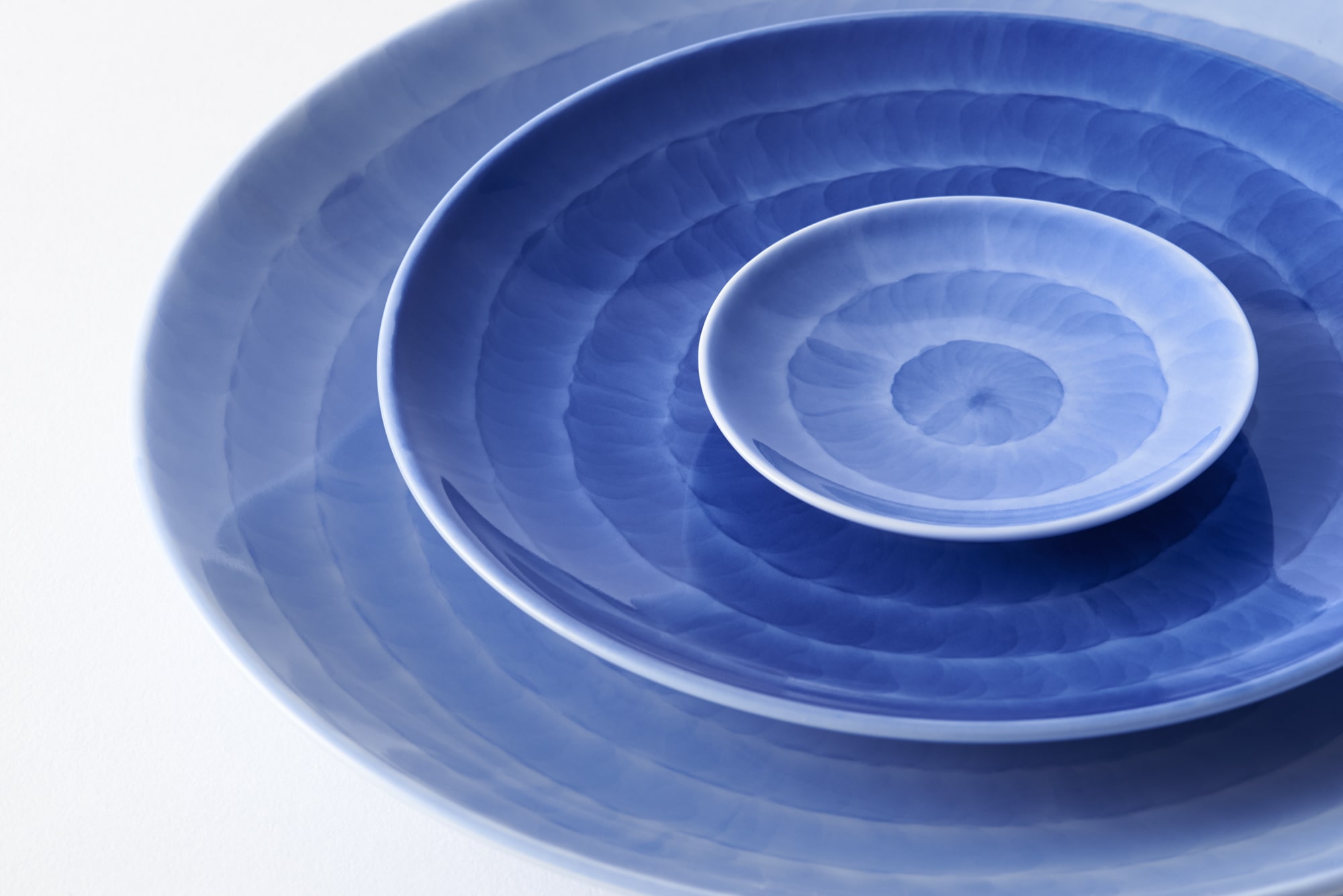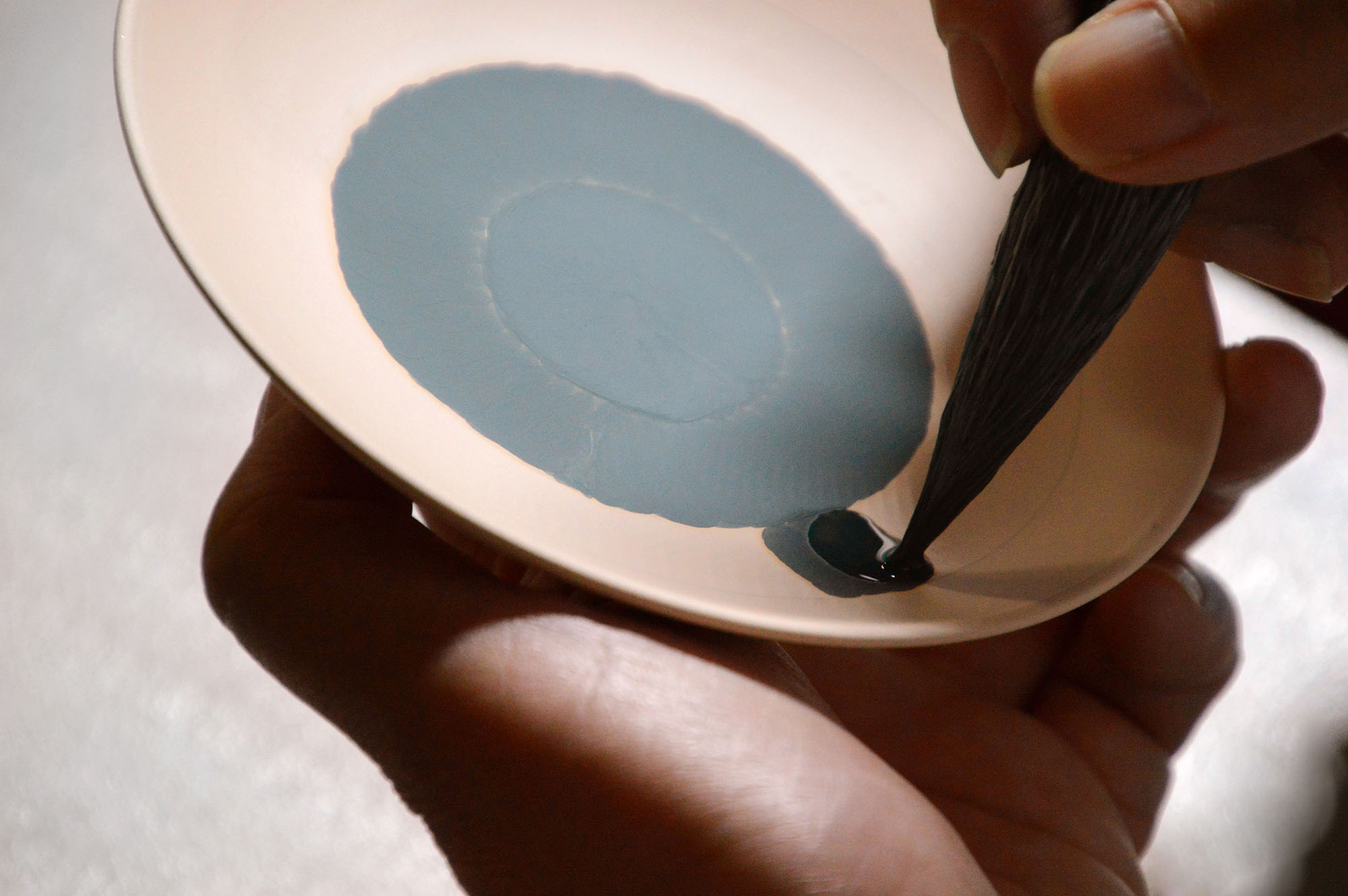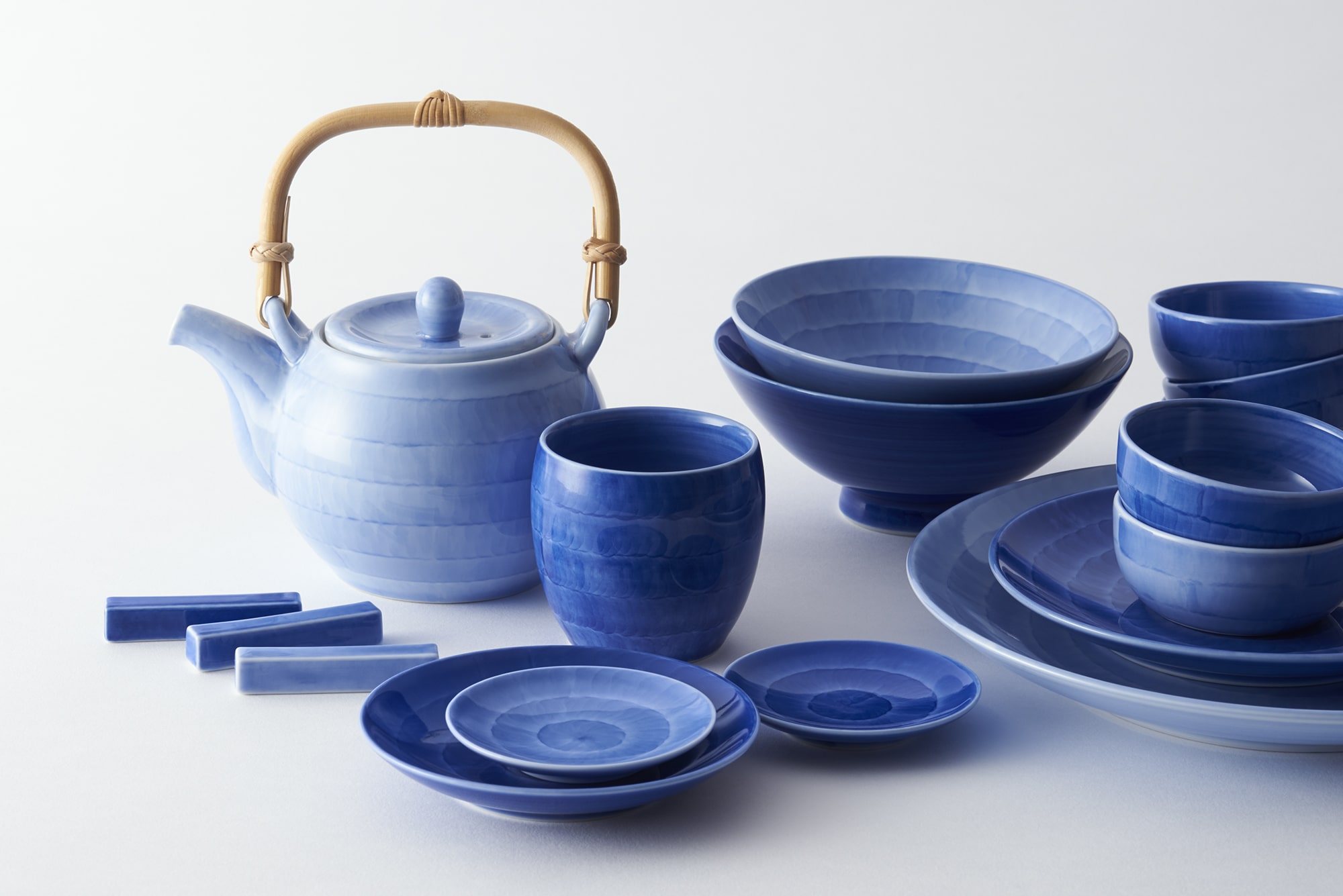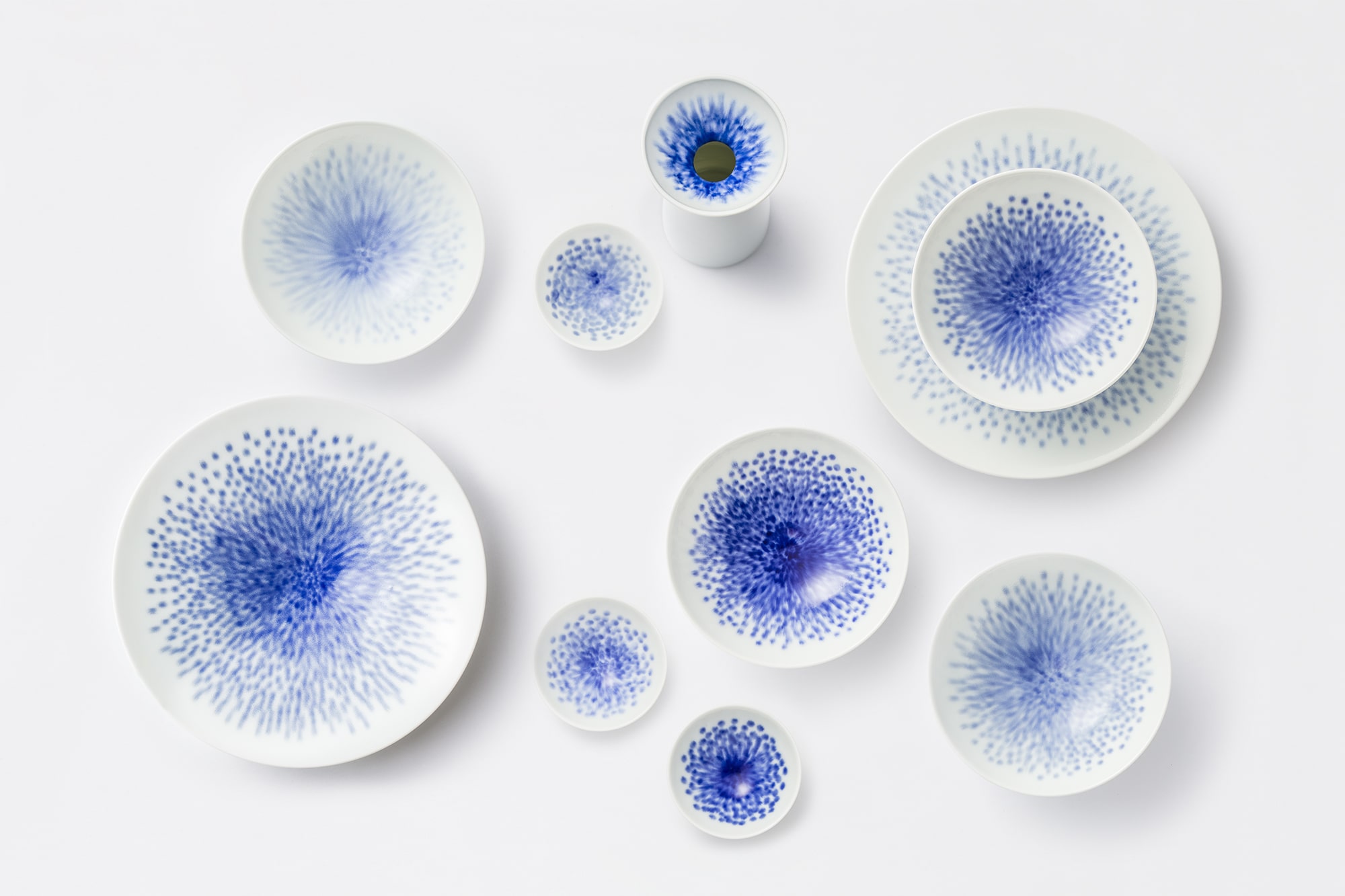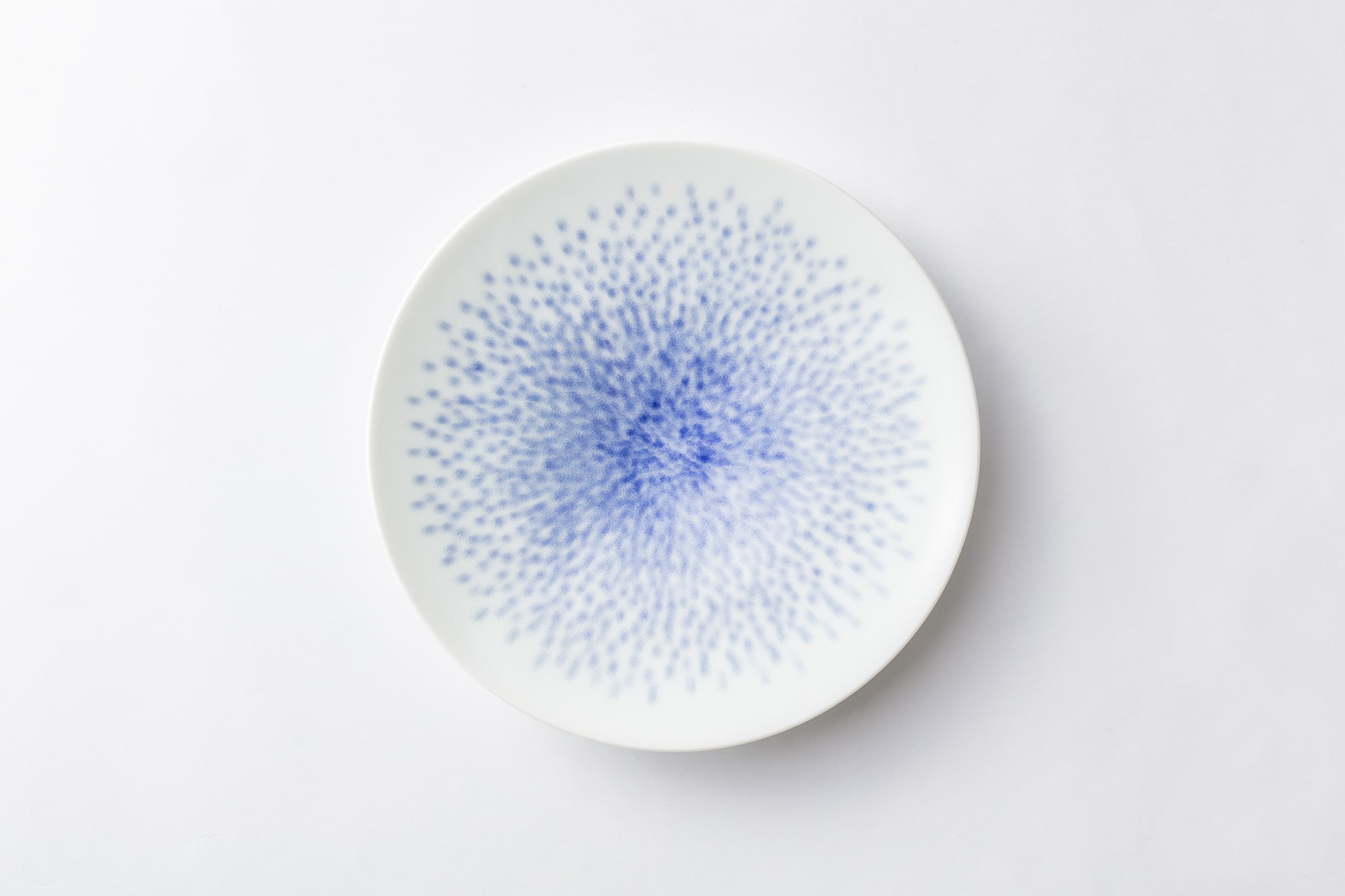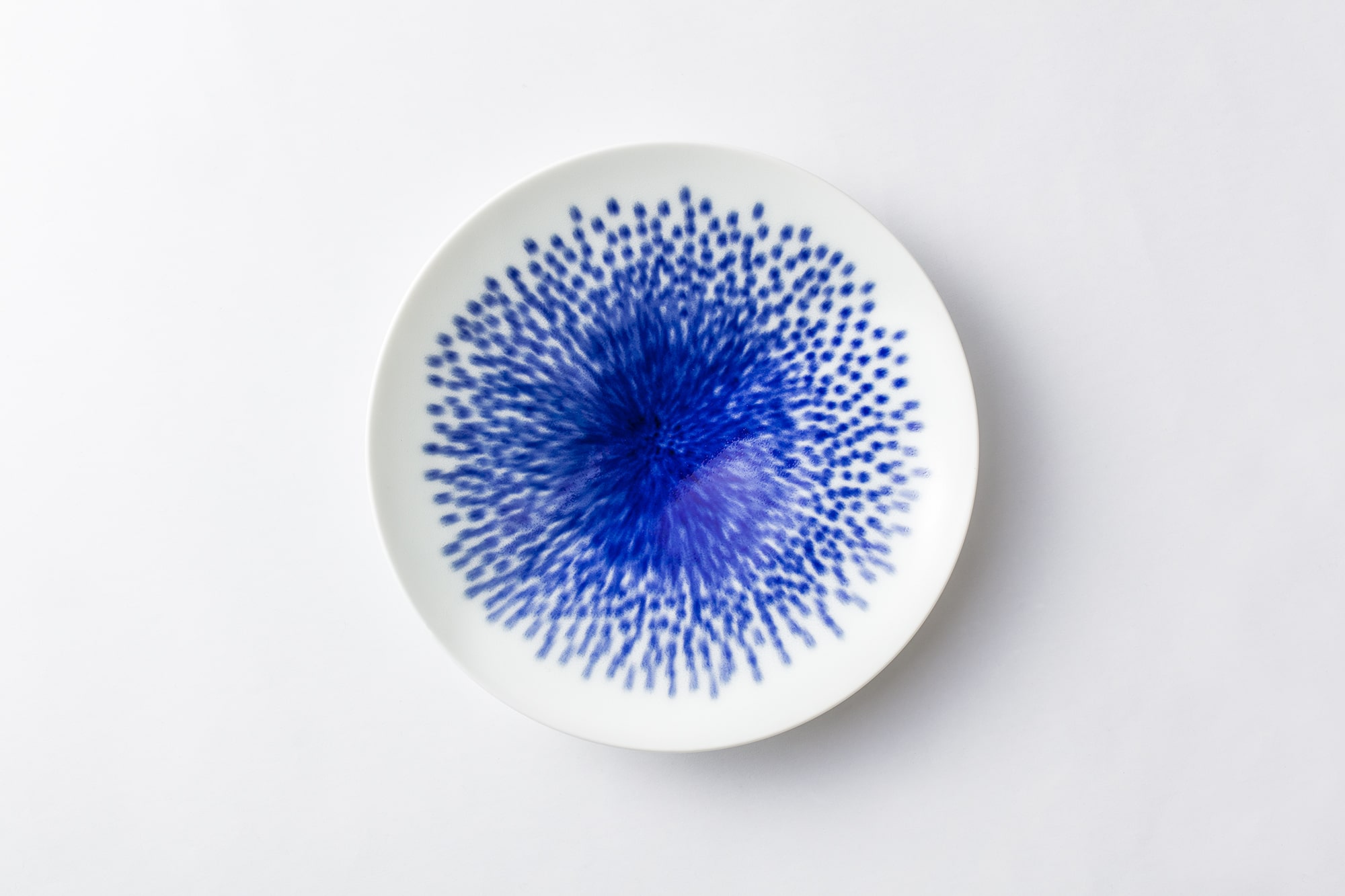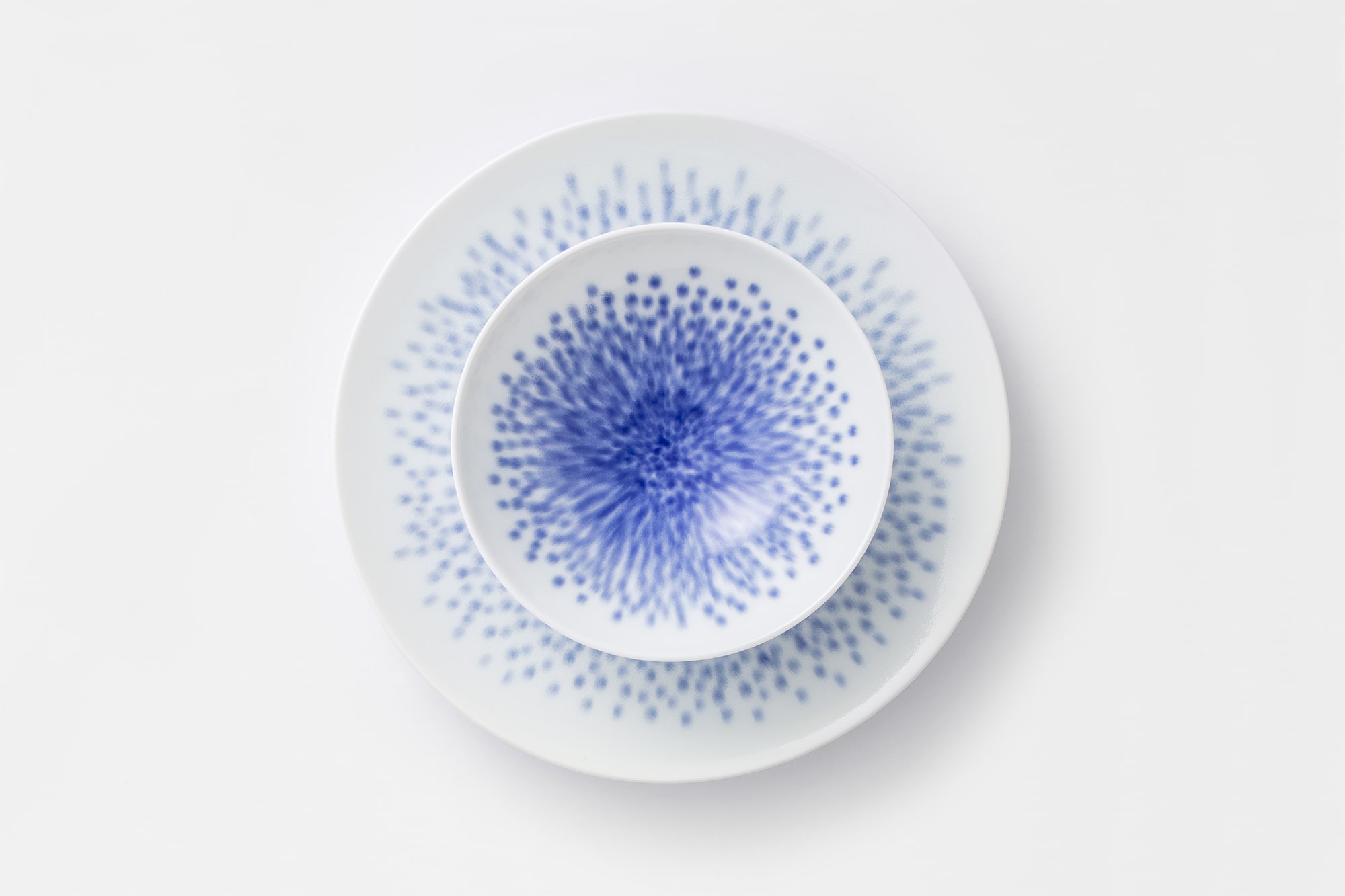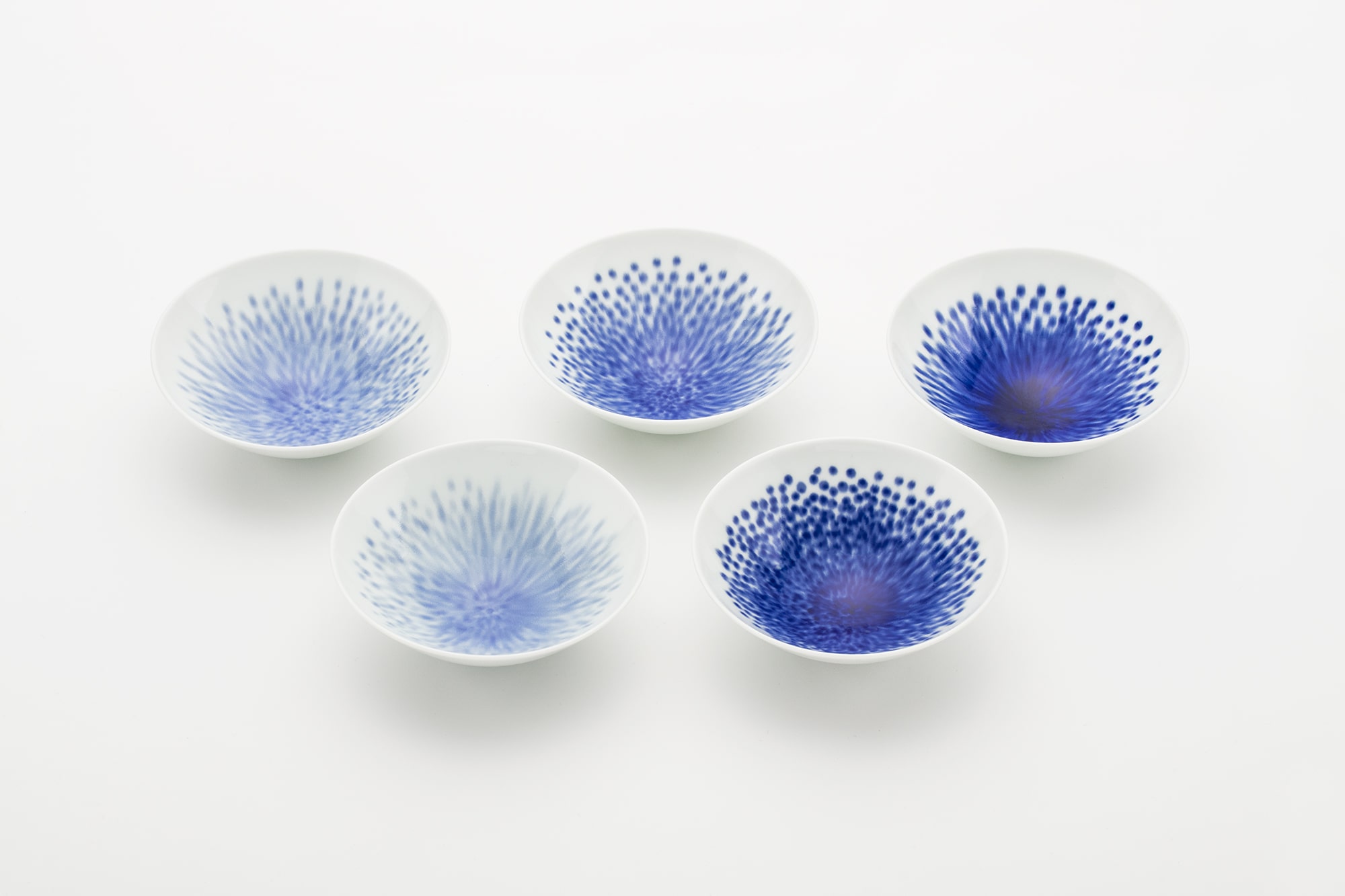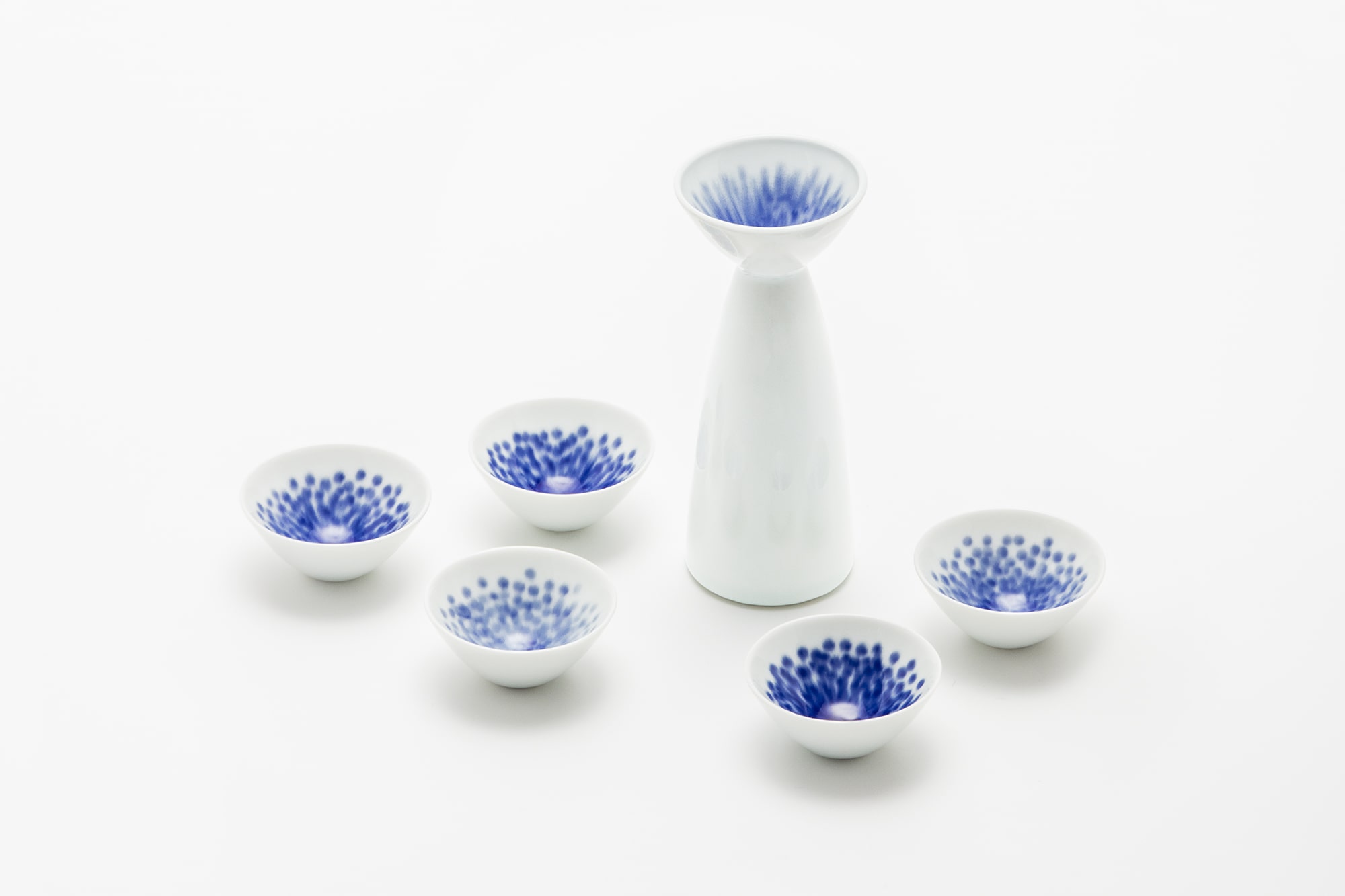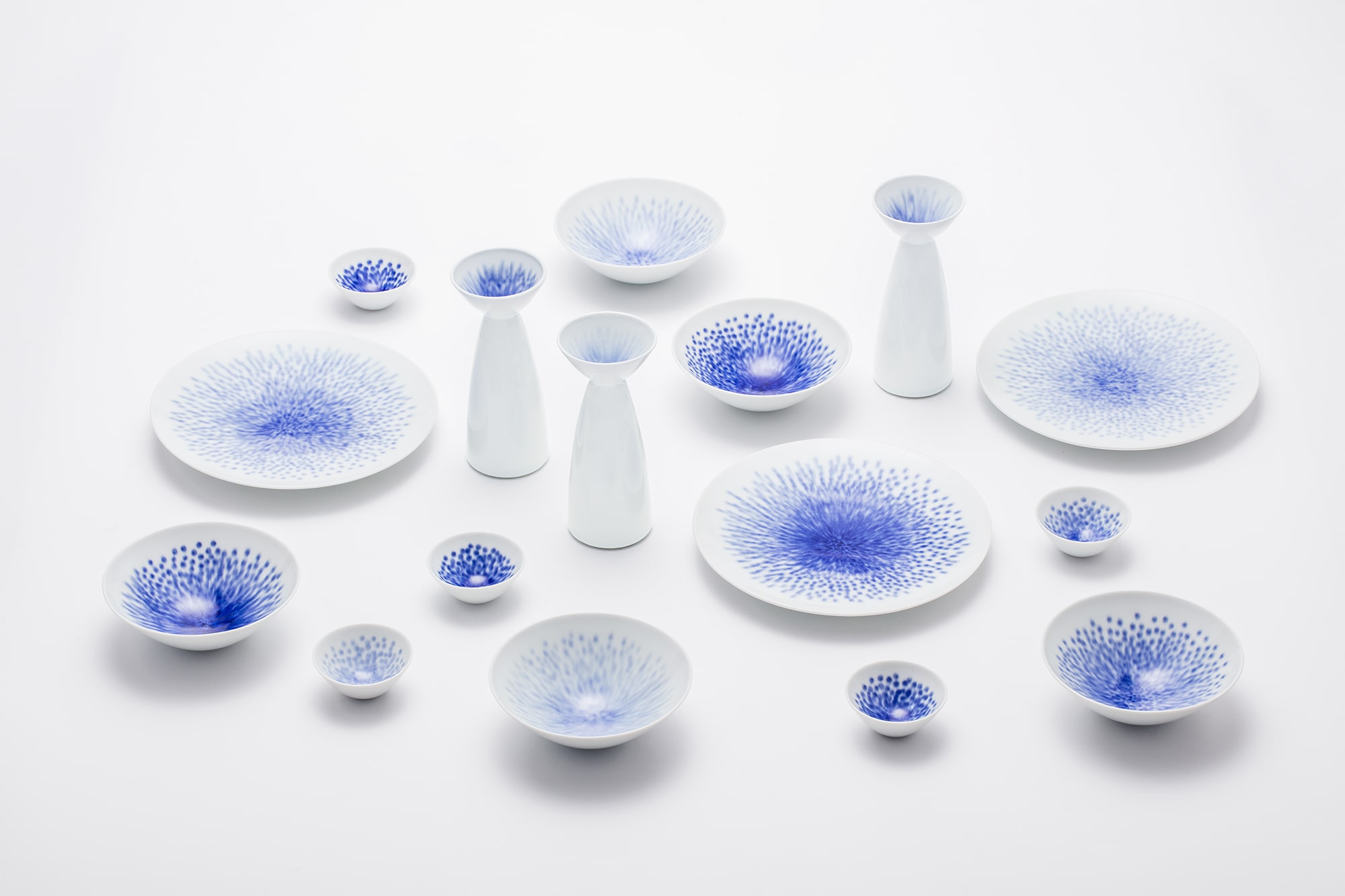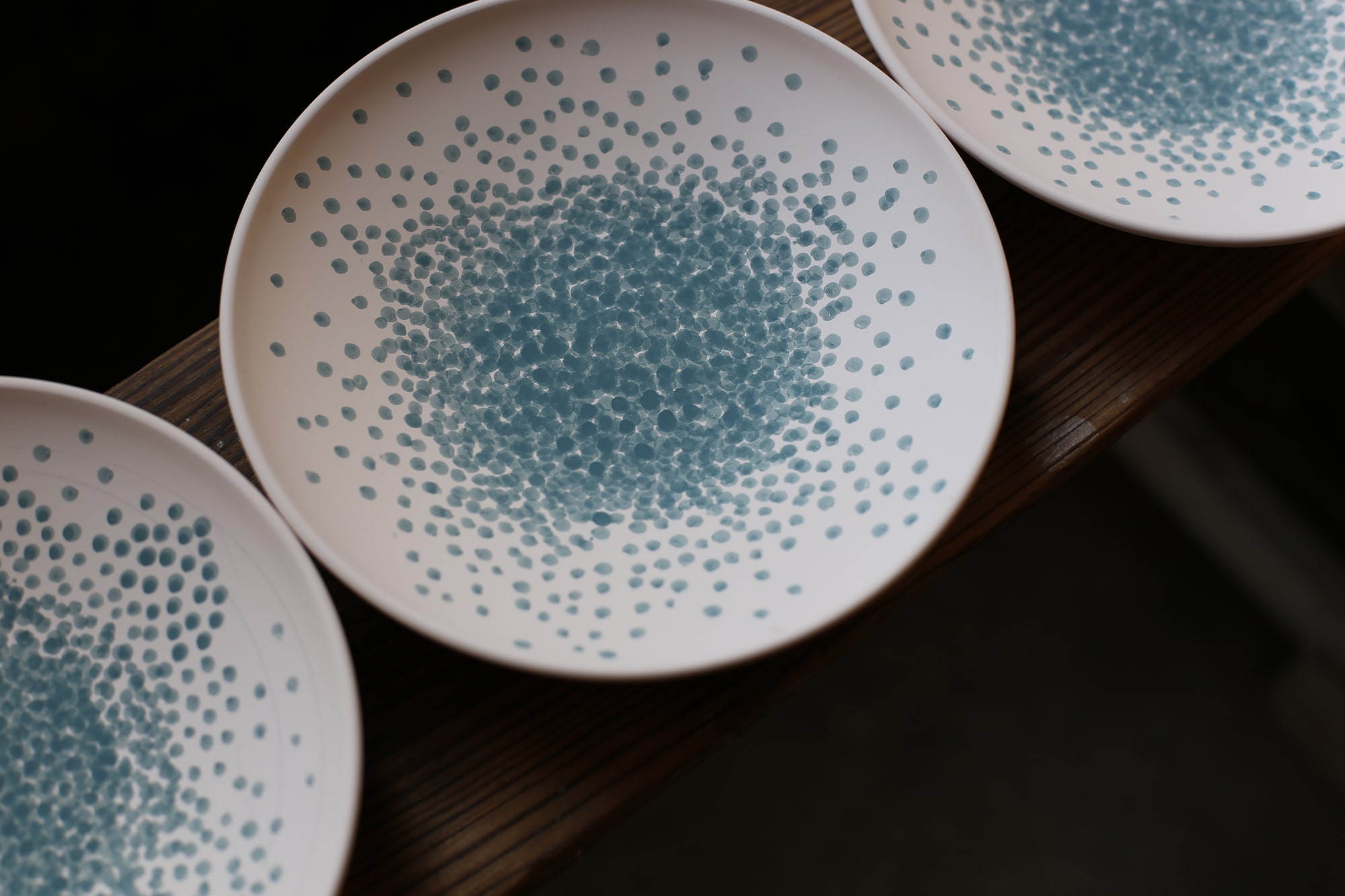
-
DATA
2016/06
-
CLIENT
Soekyu Seitosho
-
PROJECT NAME
GOSU
PHOTO
Masayuki Hayashi (GOSU)
Koya Yamashiro (GOSU HANA)LINK
Collaborate
Designing a technique itself.
A variety of blue patterns on porcelain. The blue pigment used for drawing the patterns is called “Gosu.” Gosu is believed to have been introduced to Arita from China in the early Edo Period (1603-1868). Since the patterns are drawn when unglazed, its beautiful blue color does not fade. In addition, different firing conditions result in a diversity of blue expressions, even when the same amount of Gosu is used. We wondered if it is possible to admire the beauty of Gosu in terms of its blue color rather than the pattern. Five blue shades were created together with Soekyu Seitosho, a long-established porcelain ware producer with a passion for the color of Gosu. We developed a method of dyeing the entire vessel using the traditional “dami” dyeing technique. Due to the uneven “dami” brushstrokes, the blue Gosu color appears as if it were the texture of the vessel. The expressions of Gosu made from five blue shades are reproduced by the sophisticated skills and sensibilities of the craftspeople, departing from its use for drawing patterns. This was the design of a new method for expressing the color of Gosu as the texture of the vessel itself.
Blue Flowers Bloom by Firing
A variety of blue patterns on porcelain. The blue pigment used for drawing the patterns is called “Gosu.” Gosu is believed to have been introduced to Arita from China in the early Edo Period (1603-1868). Since the patterns are drawn when unglazed, its beautiful blue color does not fade. In addition, different firing conditions result in a diversity of blue expressions, even when the same amount of Gosu is used. We wondered if it is possible to admire the beauty of Gosu in terms of its blue color rather than the pattern. Five blue shades were created together with Soekyu Seitosho, a long-established porcelain ware producer with a passion for the color of Gosu. By adjusting the chemical reaction between Gosu and the glaze, we developed a completely new technique in which the normally-avoided expression of Gosu flowing onto the surface of the vessel is intentionally used. As a result, blue flowers of hand-painted Gosu pigment bloom on the vessel after firing. Each one is unique yet all bloom in unison when fired, truly resembling dignified flowers. New possibilities have been found through this method that utilizes a chemical change to form flowers, with a new role for Gosu that is different from its traditional use for hand drawing.



